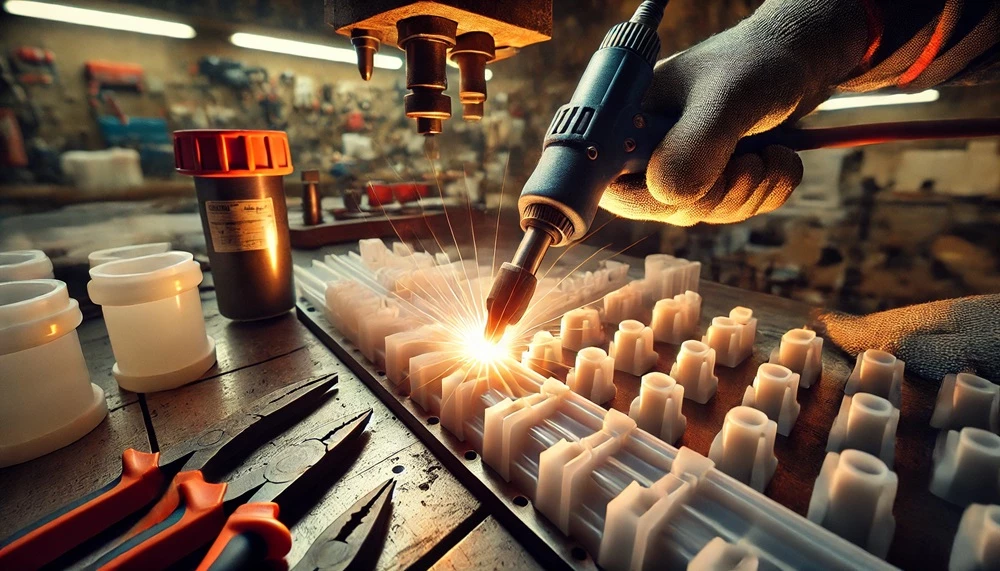Top 10 Plastic Fabrication Techniques Every Manufacturer Should Know

The growing demand for plastic products across industries from automotive to consumer goods has made plastic fabrication a crucial part of modern manufacturing. As technology advances, manufacturers have access to a wide array of techniques to mold, shape, and form plastic into nearly any design imaginable. Choosing the right fabrication method not only impacts production efficiency but also affects product quality and cost effectiveness. In this article, we will explore the top 10 plastic fabrication techniques every manufacturer should know, highlighting their benefits, typical applications, and key considerations.
Table of Contents
1. Injection Molding
Overview
Injection molding is one of the most widely used plastic fabrication techniques. It involves heating plastic pellets until they melt and then injecting the molten plastic into a mold, where it cools and solidifies into the desired shape.
Benefits
- High precision and repeatability.
- Cost-effective for large-scale production.
- Can create complex shapes with excellent surface finish.
Applications
- Automotive components like dashboards and bumpers.
- Consumer products, including toys and household appliances.
- Packaging such as bottle caps and containers.
- Medical devices, including syringes and diagnostic parts.
2. Extrusion
Overview
In extrusion, melted plastic is forced through a die to form long continuous shapes, such as tubes, pipes, or sheets. This technique is ideal for producing uniform, continuous products.
Benefits
- Efficient for high-volume production of long items.
- Capable of producing consistent cross-sectional profiles.
Applications
- Pipes for plumbing, construction, and industrial use.
- Films and sheets for packaging and liners.
- Insulation for wires and cables.
- Window and door frames in the construction industry.
3. Blow Molding
Overview
Blow molding is a process used to create hollow plastic parts. It starts by heating a plastic tube, which is then inflated within a mold to take its shape. The plastic cools and hardens into the final product.
Benefits
- Efficient for creating hollow parts.
- Suitable for high-volume production.
Applications
- Plastic bottles for beverages, cleaning products, and cosmetics.
- Fuel tanks and other hollow automotive components.
- Containers for food, chemicals, and other liquids.
4. Thermoforming
Overview
Thermoforming involves heating plastic sheets until pliable, then forming them into shapes using vacuum, pressure, or mechanical tools. It is commonly used for large, simple shapes.
Benefits
- Cost-effective for producing large parts.
- Suitable for low to medium production runs.
- Capable of forming thin-walled, lightweight parts.
Applications
- Packaging trays and containers.
- Automotive parts such as dashboards and door panels.
- Retail displays and signage.
5. Plastic Welding
Overview
Plastic welding is a technique used to join thermoplastic materials by softening them with heat and then applying pressure to create a bond. This method is particularly important for assembling parts made of the same type of plastic.
Common Plastic Welding Techniques
- Hot Air Welding: A stream of hot air softens the plastic surfaces, which are then fused together with a filler rod.
- Ultrasonic Welding: High-frequency sound waves generate heat at the joint, melting the plastic to create a strong bond.
- Extrusion Welding: Molten plastic is extruded between two surfaces, fusing them as it cools.
- Spin Welding: Frictional heat is generated by spinning one part against another until the plastic melts and bonds.
- Laser Welding: A focused laser beam melts the joint surfaces with high precision, creating a clean weld.
Benefits
- Strong, durable joints: Welded plastic parts often have bonds as strong as the original material.
- Efficient assembly: Suitable for high-speed, automated manufacturing processes.
- No need for fasteners or adhesives: Reduces material costs and production time.
Applications
- Automotive parts like bumpers, air ducts, and fuel tanks.
- Medical devices such as syringes, catheters, and IV bags.
- Packaging: Sealing plastic films and containers.
- Plumbing and piping: Welded thermoplastic pipes for leak-proof connections.
6. CNC Machining
Overview
CNC (Computer Numerical Control) machining uses computer-controlled tools to precisely cut and shape plastic into highly accurate parts. This subtractive process is ideal for prototypes and low-volume production of detailed designs.
Benefits
- High precision and tight tolerances.
- Capable of creating intricate designs.
- Works with a wide range of plastics, including thermosets.
Applications
- Prototyping for various industries.
- Medical devices with complex geometries.
- Aerospace components that require high accuracy.
- Customized parts for industrial machines and electronics.
7. 3D Printing (Additive Manufacturing)
Overview
3D printing, or additive manufacturing, creates plastic parts layer by layer from a digital design file. It’s a flexible and innovative fabrication technique that is gaining popularity for prototyping and low-volume production.
Benefits
- Rapid prototyping with quick turnaround times.
- Customization and design flexibility.
- Cost-effective for small batch production.
Applications
- Prototypes for design validation and testing.
- Customized consumer products such as phone cases and wearables.
- Medical devices like prosthetics and implants.
- Complex geometries that are difficult to achieve with traditional manufacturing methods.
8. Compression Molding
Overview
Compression molding is primarily used with thermosetting plastics. The plastic material is placed into a heated mold, compressed, and cured, forming a rigid and durable part. This technique is known for producing parts with high strength.
Benefits
- Suitable for high-strength, heat-resistant parts.
- Capable of producing large, complex shapes.
- Minimal material waste compared to other processes.
Applications
- Electrical components like insulators and circuit boards.
- Automotive parts such as brake pads and engine components.
- Heavy-duty industrial products requiring durability and heat resistance.
9. Rotational Molding
Overview
Rotational molding, also known as rotomolding, involves heating plastic in a mold that is rotated along two axes, spreading the material evenly to create hollow objects with uniform wall thickness.
Benefits
- Produces large, seamless hollow parts.
- Uniform thickness and minimal stress points.
- Ideal for custom and low-volume production runs.
Applications
- Tanks for water storage, fuel, and chemicals.
- Outdoor playground equipment and toys.
- Large containers for industrial and agricultural use.
- Marine buoys and floating devices.
10. Laser Cutting and Engraving
Overview
Laser cutting uses high-powered lasers to cut, shape, or engrave plastic sheets with precision and speed. This method is ideal for creating intricate designs and patterns in thin materials.
Benefits
- High accuracy and clean edges.
- Capable of intricate cuts and detailed engravings.
- Works with a variety of plastic materials.
Applications
- Custom signage and displays.
- Electronic enclosures and parts.
- Decorative panels for architectural use.
- Precision parts for medical and industrial equipment.
Conclusion
Plastic fabrication techniques are continually evolving, offering manufacturers a diverse toolkit for creating parts and products across a wide range of industries. Whether you need high-volume production through injection molding or specialized assembly with plastic welding, understanding the strengths and applications of each technique can optimize your production processes.
By choosing the right fabrication method based on material properties, production scale, and design complexity, manufacturers can ensure high-quality outcomes while controlling costs. Whether you’re making automotive components, medical devices, or consumer products, these top 10 techniques will equip you with the knowledge needed to succeed in plastic fabrication.







